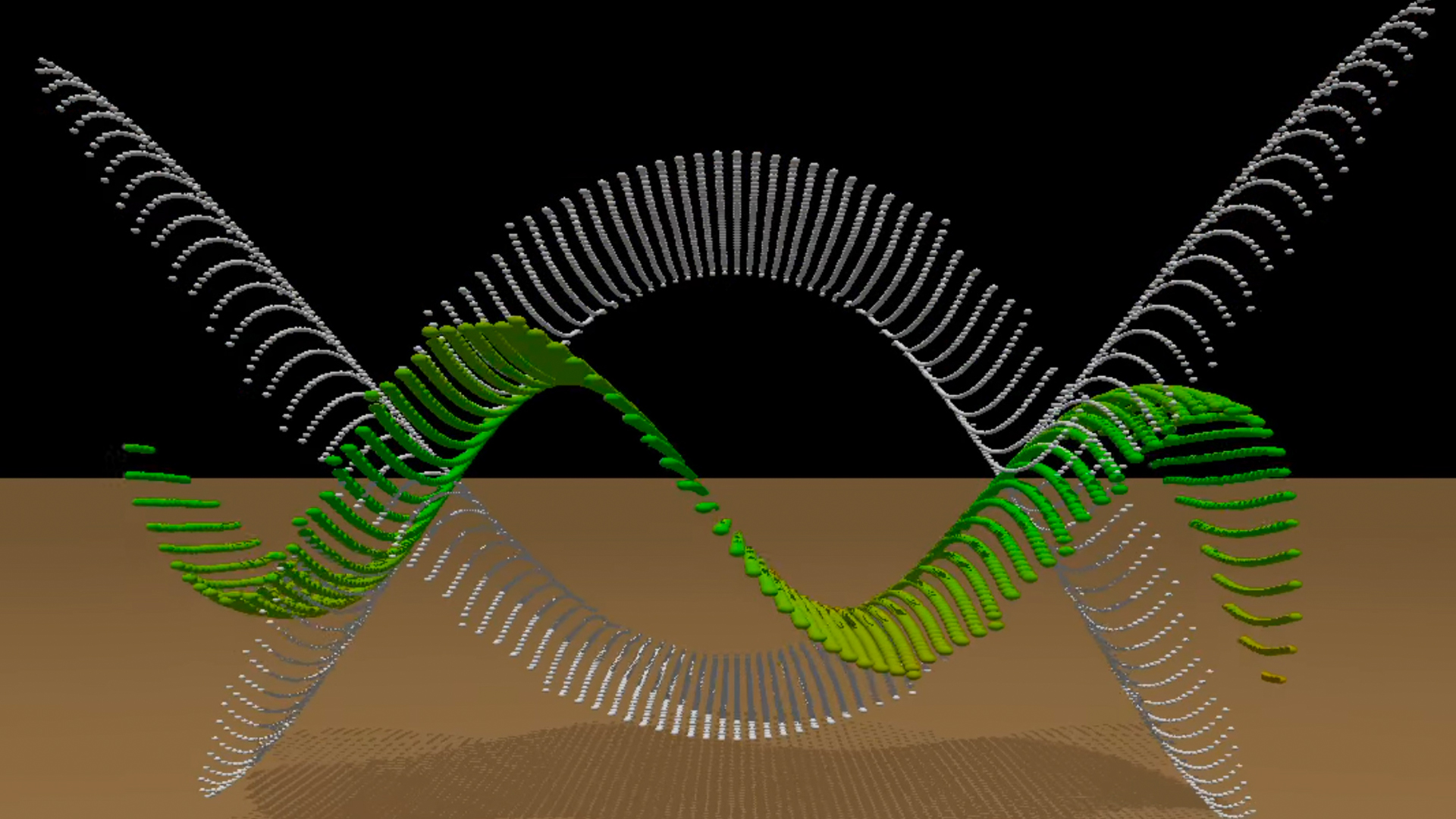
Video of a phenomenon
Standing waves that won’t stand still
- von Birte Vierjahn
- 12.08.2019
And yet they move: An international team of scientists involving physicists from the Center for Nanointegration (CENIDE) at the University of Duisburg-Essen (UDE) has observed a new phenomenon: They have generated standing waves – which travel. The results of their research have been published in the scientific journal "Physical Review B”, including videos.
A wave consists of antinodes and nodes. If you imagine this on a rope, the antinodes are the areas which swing up and down, whereas nodes are the points in between. With a standing wave, nodes and antinodes always remain at the same position and do not move along the rope. In travelling waves on the other hand, nodes and antinodes do not remain in place: If you start shaking a rope from one end, you will excite a wave that travels down the rope until it reaches the other end.
Benjamin Zingsem from the research group of UDE's Professor Michael Farle has now observed the apparent paradox for the first time: For this purpose, he worked with, what physicists call a chiral magnet: A magnetic material in which the so called Dzyaloshinskii-Moriya interaction occurs. In such magnets, all dipoles – the tiny magnets that make up the solid – are slightly tilted towards each other with a certain direction, like screw windings.
If the system is resonantly excited, a standing wave with travelling properties is formed. This wave has stationary nodes and antinodes, but at the same time a continuous phase shift creates the impression of a travelling wave. "I had to look at it for a long time before I could put it into words. I only really understood it by watching a video of the phenomenon," says Zingsem.
The effect reveals previously unknown transport properties in such systems. Which may, for example, be harnessed in future technology, as, information can be stored, transmitted and processed via magnetic oscillations without generating heat, which is the main bottleneck in conventional electronics. In general, standing waves are fundamental for understanding all types of matter and they are the foundation for our understanding of chemistry.
In this project Zingsem collaborated with colleagues from the University of Colorado (USA) and the University of Glasgow (UK).
Picture: Excerpt from a video showing the standing wave with travelling properties. White: Nodes and antinodes of the standing wave which are repeatedly passed through. Green: Snapshot of the wave.
Video of the phenomenon: http://udue.de/standingWaveComparison
Original publication:
B.W. Zingsem, M. Farle, R.L. Stamps, and R.E. Camley, Unusual nature of confined modes in a chiral system: Directional transport in standing waves Phys. Rev. B,99:214429, Jun 2019.
https://journals.aps.org/prb/abstract/10.1103/PhysRevB.99.214429
Further Information:
Benjamin Zingsem, Faculty of Physics and Forschungszentrum Jülich, +49 203 37-9 4411, benjamin.zingsem@uni-due.de
Editor: Birte Vierjahn, +49 203 37-9 8176, birte.vierjahn@uni-due.de
Post-Views: 6881
